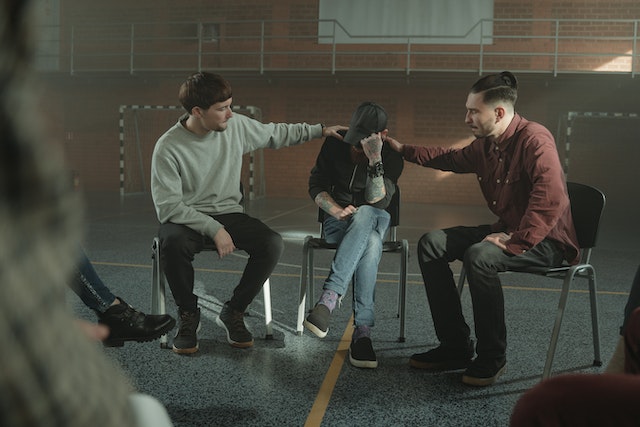Joining a depression and bipolar support group can provide several benefits. The first is that it can improve your mental health and ability to function. It is because it helps you learn more about your illness and gives you access to people with similar experiences and problems.
Discussion
A support group can help you to cope with a mental health condition. They can provide emotional and social support and information about the disease and treatment options.
Support groups are often moderated and led by people with personal experience with the condition. The groups can be online or in person.
Mood disorders are among the most common psychiatric conditions. They affect your ability to function and your quality of life.
Depression and bipolar support groups are available to meet your specific needs. There are many different types to choose from, so be sure to look around and find one that suits you.
The Depression and Bipolar Support Alliance is a national organization that offers peer-led support. They also provide online resources, including an online community, wellness-oriented support, educational materials, and empowering services.
DBSA is the most extensive mood disorder-focused MHO in the U.S. They offer family and caregiver support groups. Their website contains information about current research and fundraising events.
NAMI (National Alliance on Mental Illness) is another national organization that offers bipolar forums, a newsletter, online discussion groups, and fundraising. They also provide a bipolar helpline.
Barriers to engagement
One of the most significant barriers to engagement in a depression and bipolar support group is the social anxiety that plagues many members. The good news is that a supportive and collaborative relationship with a healthcare provider can help address this barrier and improve the odds that members will receive quality care.
In a study, researchers attempted to identify the best of the lot by surveying 23 individuals with mild to moderate mental illnesses. They were consensually engaged in an ongoing treatment program for at least four months. To evaluate the efficacy of their findings, the authors analyzed the data using quantitative and qualitative methodologies.
A card sorting task facilitated the identification of the top ten most common barriers. It also allowed for discovering the more interesting ones, such as positive experiences with the treatment. Similarly, a recurrence ranking algorithm was used to determine the top facilitators.
As the names suggest, the most essential trumps the rest. Although the sexiest of the group is to engage in an engaging activity, such as a social outing, the study found that a positive experience with a therapist was a more effective means of engagement. It is a particularly pertinent finding, given that a positive adolescent-therapist relationship is crucial in promoting therapeutic engagement.
DBSA participants had a varied clinical profile
The Depression and Bipolar Support Alliance (DBSA) is the most extensive mood disorders-focused MHO in the U.S. Its mission is to provide “help, hope, and support to those struggling with bipolar and depression.”
DBSA claims to be a peer-led group. Clinicians, treatment facilities, and family members may refer participants. They are typically well-educated and primarily white.
A study of the DBSA found that its meetings were attended on average twice a month. It is a low number compared to similar SUD MHOs. Despite its relatively low frequency, DBSA meetings are meaningful. However, future research will be needed to understand the true impact of DBSA on individuals with mood disorders.
DBSA members reported a variety of clinical findings. The most common self-reported mood diagnosis was major depressive disorder. Another was bipolar II. DBSA attendees were also more likely to report seeing a mental health therapist in the past 90 days. Moreover, DBSA was associated with a higher rate of medication use for behavioral problems.
DBSA participants were more likely to report many social and community orientations. Specifically, a DBSA member was more likely to have a religious affiliation than a non-DBSA member.
DBSA participation raises functioning and life satisfaction
Depression Bipolar Support Alliance (DBSA) is a mental health organization (MHO) that is focused on mood disorders. DBSA provides a safe space where people can interact with other members and receive support. In addition to delivering meetings, DBSA has resources to help individuals take the first steps to recovery. The DBSA Wellness Tracker is a new online tool that tracks symptoms and helps people find helpful resources.
DBSA participants are generally male, white, and religious. A treatment facility or clinician refers to a substantial proportion. Compared to non-DBSA participants, the DBSA group is significantly more likely to be older, unemployed, and have a low annual income. They are less likely to have gender-specific psychiatric diagnoses and a depressive disorder.
DBSA membership is free. Generally, meetings occur twice a month. However, DBSA meetings are less frequent than similar SUD MHOs. This may explain the lower attendance rates. It may also be more challenging for people with poorer functioning to attend meetings.
DBSA has recently partnered with the St. Luke’s United Methodist Church Counseling Center to host a series of lectures. These meetings will focus on “Hope Through the Holidays.”
Stories are not treatment advice
The adage that goes on often is that it is best to have a trusted ally at your beck and call. It is especially true if you are prone to bipolar spikes. Fortunately, there are many reputable treatment options to choose from. Your well-being is in good hands, from top-of-the-line medication to a nip and tip session to the occasional therapist visit. Moreover, you don’t have to shell out a penny to get it. Ensure you are logged into your online profile, armed with a list of dos and don’ts. A plan of action will keep you from making bad decisions and ensure you get the coveted treatment. If you can’t afford the big wigs, visiting a local treatment center can make all the difference.




